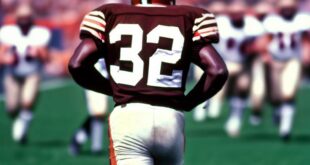A Simple Test to Determine Whether a Person is Having a Stroke
The American Stroke Associations suggests a simple three question test to give to someone who may be experiencing the symptoms of a stroke. The American Stroke Association is a division of the American Heart Association.
In an article published in February of 2003, the ASA says that a 60-second test can help determine whether someone may be experiencing a stroke. The three question test has been used by health care professionals as an initial way of determining whether someone may be experiencing a stroke. But a research project by North Carolina-Chapel Hill School of Medicine in Chapel Hill, N.C. looked into the question of whether non-medical professionals could administer the short test and correctly identify the symptoms of a possible stroke. The conclusions was yes, that bystanders could be helpful in determining whether a person is experiencing a stroke. One of the reasons they looked into it was to see whether bystanders could be helpful to a 9-1-1 dispatcher in helping narrow down what is happening to a potential patient.
The three questions given to the suspected stroke sufferers were:
Can you raise your arms and keep them up?
Can you smile?
Can you repeat a simple sentence?
The study found that when non-medical volunteers were asked by a telephone dispatcher to administer the test, they correctly identified the symptoms 96 percent of the time…especially the raising of the arms and the speaking of a simple sentence. They were less effective in evaluating whether there was facial weakness in a smile, probably because of not knowing what the person’s normal smile looked like. Doctors caution that this does not mean that citizens should try to diagnose stroke symptoms themselves.
This study focused on citizens who were being given instruction over the telephone by emergency dispatchers.
Any sign of weakness in the face, slurred speech, or weakness or numbness in the limbs should be evaluated by medical professionals immediately.
If stroke victims are given proper help within 3 hours of the stroke, the ability to recover is greatly increased.
Heart Attack Warning Signs
Some heart attacks are sudden and intense — the “movie heart attack,” where no one doubts what’s happening. But most heart attacks start slowly, with mild pain or discomfort. Often people affected aren’t sure what’s wrong and wait too long before getting help. Here are signs that can mean a heart attack is happening:
-
Chest discomfort. Most heart attacks involve discomfort in the center of the chest that lasts more than a few minutes, or that goes away and comes back. It can feel like uncomfortable pressure, squeezing, fullness or pain.
-
Discomfort in other areas of the upper body. Symptoms can include pain or discomfort in one or both arms, the back, neck, jaw or stomach.
-
Shortness of breath with or without chest discomfort.
-
Other signs may include breaking out in a cold sweat, nausea or lightheadedness
As with men, women’s most common heart attack symptom is chest pain or discomfort. But women are somewhat more likely than men to experience some of the other common symptoms, particularly shortness of breath, nausea/vomiting, and back or jaw pain.
Learn the signs, but remember this: Even if you’re not sure it’s a heart attack, have it checked out (tell a doctor about your symptoms). Minutes matter! Fast action can save lives — maybe your own. Don’t wait more than five minutes to call 9-1-1 or your emergency response number.
Calling 9-1-1 is almost always the fastest way to get lifesaving treatment. Emergency medical services (EMS) staff can begin treatment when they arrive — up to an hour sooner than if someone gets to the hospital by car. EMS staff are also trained to revive someone whose heart has stopped. Patients with chest pain who arrive by ambulance usually receive faster treatment at the hospital, too. It is best to call EMS for rapid transport to the emergency room.
Stroke Warning Signs
If you or someone with you has one or more of these signs, don’t delay!
- Sudden numbness or weakness of the face, arm or leg, especially on one side of the body
- Sudden confusion, trouble speaking or understanding
- Sudden trouble seeing in one or both eyes
- Sudden trouble walking, dizziness, loss of balance or coordination
- Sudden, severe headache with no known cause
Immediately call 9-1-1 or your emergency response number so an ambulance (ideally with advanced life support) can be sent for you. Also, check the time so you’ll know when the first symptoms appeared. It’s very important to take immediate action. If given within three hours of the start of symptoms, a clot-busting drug called tissue plasminogen activator (tPA) can reduce long-term disability for the most common type of stroke. tPA is the only FDA-approved medication for the treatment of stroke within three hours of stroke symptom onset.
A TIA, or transient ischemic attack, is a “warning stroke” or “mini-stroke” that produces stroke-like symptoms but no lasting damage. Recognizing and treating TIAs can reduce your risk of a major stroke. The usual TIA symptoms are the same as those of stroke, only temporary. The short duration of these symptoms and lack of permanent brain injury is the main difference between TIA and stroke.
Cardiac arrest strikes immediately and without warning. Here are the signs:
- Sudden loss of responsiveness (no response to tapping on shoulders).
- No normal breathing (the victim does not take a normal breath when you tilt the head up and check for at least five seconds).
If these signs of cardiac arrest are present, tell someone to call 9-1-1 or your emergency response number and get an AED (if one is available) and you begin CPR immediately.
If you are alone with an adult who has these signs of cardiac arrest, call 9-1-1 and get an AED (if one is available) before you begin CPR.
Use an AED as soon as it arrives.
Dial 9-1-1 Fast
Heart attack and stroke are life-and-death emergencies — every second counts. If you see or have any of the listed symptoms, immediately call 9-1-1 or your emergency response number. Not all these signs occur in every heart attack or stroke. Sometimes they go away and return. If some occur, get help fast! Today heart attack and stroke victims can benefit from new medications and treatments unavailable to patients in years past. For example, clot-busting drugs can stop some heart attacks and strokes in progress, reducing disability and saving lives. But to be effective, these drugs must be given relatively quickly after heart attack or stroke symptoms first appear. So again, don’t delay — get help right away!
Statistics
Coronary heart disease is the No. 1 cause of death in the United States. Stroke is the No. 3 cause of death in the United States and a leading cause of serious disability. That’s why it’s so important to reduce your risk factors, know the warning signs, and know how to respond quickly and properly if warning signs occur.
Act in Time
The American Heart Association and the National Heart, Lung, and Blood Institute have launched a new “Act in Time” campaign to increase people’s awareness of heart attack and the importance of calling 9-1-1 immediately at the onset of heart attack symptoms.
Click here to see up-to-date info about “Heart Attack Signs.”
VERIFIED AS TRUE at TruthorFicion.com – click here!
If you pass this on to others, you could possibly save someone from permanent illness or death. Please use the ‘SHARE’ button (lower left) to email to friends, or share this message with your ‘social network.’ Thank you!




